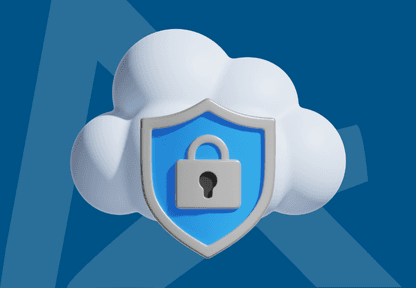October 20, 2025 • Mary Marshall
Employee Empowerment: How Good Security Improves Productivity
Discover how strategic IM and security practices boost productivity while protecting your enterprise. Learn actionable strategies.

The conventional wisdom suggests that robust security measures inevitably slow down operations, creating friction in workflows and frustrating employees. But what if this perceived trade-off is a false dichotomy? As we observe Cybersecurity Awareness Month this October, it’s time to challenge this assumption and explore how thoughtfully implemented security measures can actually enhance employee productivity and organizational effectiveness.
Employee Empowerment: How Good Security Improves Productivity
Before examining how good security improves productivity, let’s consider the devastating impact of inadequate security measures:
The average data breach costs organizations $4.45 million according to IBM’s 2023 Cost of a Data Breach Report, with business disruption accounting for nearly 40% of these costs. Beyond the immediate financial impact lies the productivity drain: employees scrambling to respond to breaches, systems taken offline, and operations grinding to a halt during incident response.
But the productivity cost of poor security extends beyond breach response. According to a study by Ponemon Institute, employees spend an average of 12.6 hours per year dealing with password-related issues. Multiply this across an enterprise with thousands of employees, and the productivity loss becomes staggering.
The Productivity Paradox: When Security Measures Backfire
Many well-intentioned security measures inadvertently create productivity obstacles:
- Complex password requirements that lead to forgotten credentials and lockouts
- Cumbersome access request processes that delay project kickoffs
- Excessive authentication steps that interrupt workflow momentum
- Manual compliance processes that divert focus from core responsibilities
When security becomes too burdensome, employees often resort to counterproductive workarounds. Research by the Ponemon Institute found that 69% of organizations report that employees bypass security measures that they find too difficult or time-consuming. These workarounds often introduce even greater security vulnerabilities, creating a vicious cycle.
The Productivity-Enhancing Power of Strategic Security
During Cybersecurity Awareness Month, organizations should recognize that security and productivity can be mutually reinforcing when implemented strategically. Here’s how thoughtful security approaches enhance productivity:
1. Self-Service Identity Management: Empowering Employees
Self-service identity management solutions allow employees to manage their own access needs without waiting for IT intervention. Avatier’s Identity Anywhere Password Management enables users to reset passwords, request access to resources, and manage their digital identities—all without submitting help desk tickets.
This self-service approach yields impressive results:
- 60% reduction in password reset tickets
- 30-40% decrease in access request processing time
- Improved employee satisfaction through autonomy
When employees can independently resolve routine identity issues, they maintain productivity momentum while IT teams can focus on more strategic initiatives.
2. Streamlined Authentication: Removing Friction While Enhancing Security
Traditional security approaches often add authentication layers that interrupt workflow. Modern authentication solutions like Single Sign-On (SSO) and password management strike a balance between security and usability.
Avatier’s SSO solutions eliminate the need for employees to remember multiple credentials while maintaining robust security standards. The productivity benefits are substantial:
- 80% reduction in login time across multiple applications
- 50% fewer credential-related support tickets
- Seamless access to resources from any device or location
When employees can move fluidly between applications without repeated authentication challenges, workflow continuity improves dramatically.
3. Automated Provisioning: Accelerating Onboarding and Role Changes
Employee productivity often stalls during transitions—new hires waiting for system access, role changes requiring new permissions, or contractors needing temporary access. Automated provisioning solutions address these bottlenecks.
With Avatier’s Identity Anywhere Lifecycle Management, organizations can implement rule-based access provisioning that automatically grants appropriate permissions based on roles, departments, or project assignments.
The productivity impact is profound:
- 70% faster onboarding time for new employees
- 85% reduction in access-related delays during role transitions
- Elimination of productivity gaps during organizational changes
When access provisioning happens automatically based on predefined rules, employees maintain productivity momentum during transitions.
4. Risk-Based Access Controls: Balancing Security with Flexibility
Traditional access management approaches often apply uniform restrictions across all users and scenarios. This one-size-fits-all approach creates unnecessary friction for legitimate activities.
Risk-based access control systems adapt security requirements based on contextual factors like location, device, time of day, and behavior patterns. This approach applies stricter controls only when risk indicators suggest potential threats.
The productivity benefits include:
- 60% reduction in authentication challenges for routine activities
- 45% decrease in security-related workflow interruptions
- Enhanced user experience without compromising security posture
When security controls adapt to risk contexts, employees encounter fewer unnecessary obstacles while truly suspicious activities receive appropriate scrutiny.
Cybersecurity Awareness Month: Building a Security Culture that Enhances Productivity
As we observe Cybersecurity Awareness Month, organizations should emphasize how security and productivity can reinforce each other when approached strategically. This year’s theme, “Secure Our World,” reminds us that effective security empowers rather than hinders our digital workforce.
Avatier’s commitment to this principle is evident in its approach to identity security. As Nelson Cicchitto, CEO of Avatier, notes: “Our mission is to make securing identities simple, automated, and proactive—so organizations can improve cyber hygiene, reduce risk, and build resilience during Cybersecurity Awareness Month and beyond.”
Building a security culture that enhances productivity requires several key elements:
1. Focus on User Experience in Security Design
Security measures should be designed with user experience in mind. This means:
- Incorporating user feedback in security implementation
- Testing security measures for usability before full deployment
- Measuring the productivity impact of security changes
- Continuously refining approaches based on user experience data
When security measures align with natural workflow patterns, adoption improves while resistance decreases.
2. Educate on the “Why” Behind Security Requirements
Employees are more likely to embrace security practices when they understand their purpose. Effective security awareness should:
- Explain the rationale behind security policies
- Use real-world examples to illustrate security principles
- Connect security practices to business and personal outcomes
- Emphasize each employee’s role in organizational protection
When employees understand how security measures protect both the organization and their own productivity, compliance improves dramatically.
3. Leverage AI to Reduce Security Burden
AI-driven security tools can handle routine security tasks while alerting humans only when necessary. Avatier’s AI Digital Workforce exemplifies this approach by:
- Automating identity management workflows
- Enabling passwordless authentication
- Continuously verifying identities while enforcing least-privilege access
- Reducing human error in security processes
As Dr. Sam Wertheim, CISO of Avatier, explains, “Cybersecurity is everyone’s responsibility, but it doesn’t have to be everyone’s burden.” By leveraging AI for routine security tasks, organizations free employees to focus on their core responsibilities.
Real-World Success: Productivity Gains Through Strategic Security
Organizations implementing strategic security approaches report significant productivity improvements:
A global financial services firm implemented Avatier’s identity management solutions and experienced:
- 40% reduction in time spent on access management tasks
- 65% decrease in security-related productivity disruptions
- 85% improvement in employee satisfaction with security processes
A healthcare organization deployed risk-based access controls that:
- Reduced authentication challenges by 50% for clinical staff
- Decreased time spent on compliance documentation by 70%
- Improved patient care efficiency while maintaining HIPAA compliance
These examples demonstrate that when security is implemented thoughtfully, productivity flourishes rather than suffers.
Measuring the Productivity Impact of Security Investments
To maximize the productivity benefits of security investments, organizations should establish metrics that capture both security effectiveness and productivity impact:
- Time saved through automated identity processes
- Reduction in security-related support tickets
- Decrease in authentication-related workflow interruptions
- Employee satisfaction with security processes
- Time from access request to provisioning completion
- Onboarding time reduction through automated provisioning
These metrics help organizations quantify the productivity return on security investments, making the business case for strategic security approaches more compelling.
Conclusion: Security as a Productivity Asset
The key is approaching security not as a productivity tax but as an enabler of efficient, uninterrupted work. When security measures align with workflow patterns, employees spend less time wrestling with security obstacles and more time on value-creating activities.
By transforming security from a hindrance to a productivity enhancer, organizations not only strengthen their defense posture but also gain a competitive advantage through more efficient operations and more engaged employees. That’s a win-win proposition worth celebrating during Cybersecurity Awareness Month and throughout the year.









